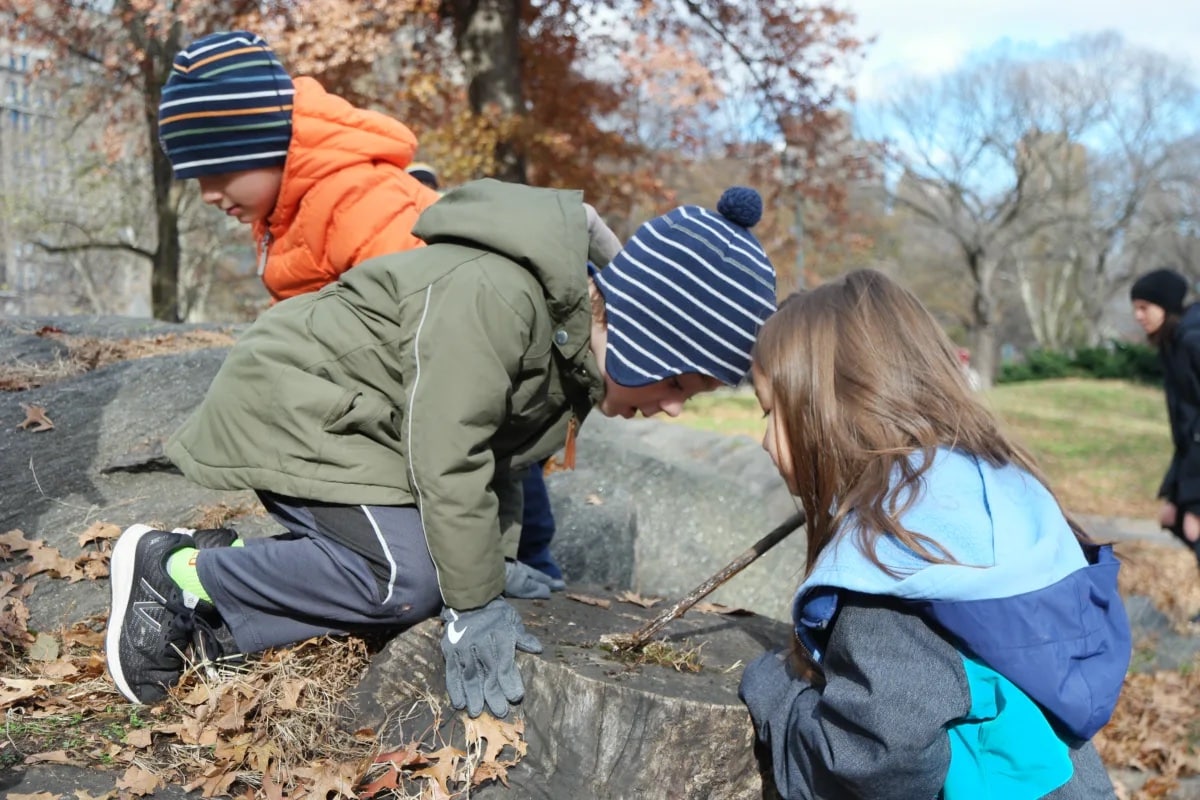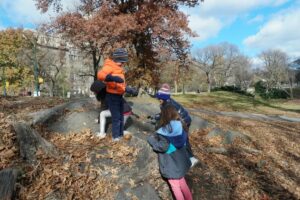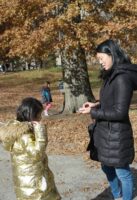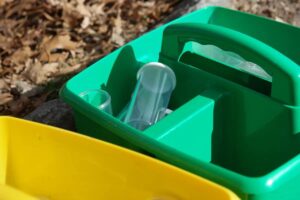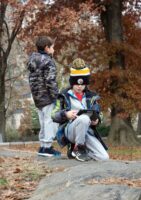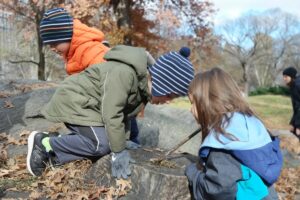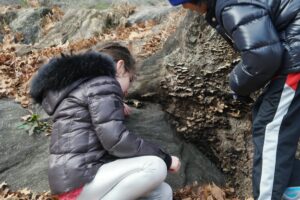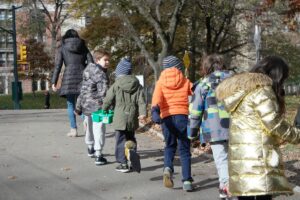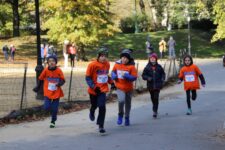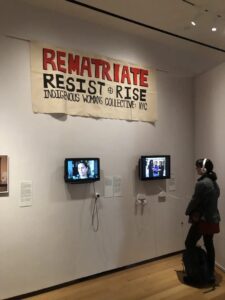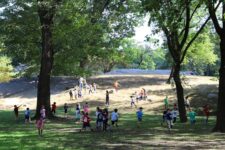The team of entomologists is mired in the task of collecting live specimens when they’re suddenly interrupted.
“How do you know a slug isn’t an insect?” Beverly Chang, their teacher, asks.
“It doesn’t have legs!” the scientists chime in unison.
“How many legs do insects have?”
“Six!”
Satisfied with their answer, Beverly leaves her students to their work.
Since the start of school, first graders at Ethical Culture have been learning science out in the field. In groups of ten or fewer, they venture out to Central Park for 35 minutes every week, staying indoors only if they’re up against heavy rain.
On this Thursday, the weather is unseasonably good. The sky is the most intense of ceruleans, spotted with only a few clouds, and the air is just cold enough to keep a handful of well-bundled six-year-olds on their toes. Once they’ve crossed Central Park West, sidestepped the horse-drawn carriages, and arrived in a small clearing, the kids scramble to their favorite spots in the park.
Each first grader has settled on a topic of study. In this group, some have chosen rocks while others have chosen plants, but the majority are on the hunt for bugs, digging beneath fallen leaves and loose soil for critters. Should they find something of interest, two buckets filled with Petri dishes, magnifying glasses, and plastic vials stand ready, providing all the tools our budding scientists will need to examine and document the world around them.
The slugs — while technically not insects — are a discovery Beverly herself didn’t expect. “Children can find things in the park that adults might ignore,” she says. One perceptive student found larvae tucked in the folds of an acorn. With their innate curiosity, first graders are always finding new things to explore, surprising Beverly each year.
With the onset of winter, our students will retire to the classroom, but this is when the research begins in earnest. Someone is asking why leaves fall and change color. Someone else is asking how birds fly. Using an iPad app that allows voice recordings, drawings, text, photos, and videos, the students will create a multimedia book focused on one guiding question. “They can present in a way that they think is best suited to them,” explains Beverly.
Children can find things in the park that adults might ignore.
And when our first graders get the answers to these deceptively simple questions, they really get them. A group of girls studying plants wondered why four-leaf clovers are so rare. In response, Beverly gave them two substitution ciphers to decode: one that spelled out the message “draw a clover” and another that spelled out the message “draw a cover.” The exercise demonstrated how a small difference in code can result in a visible difference in an object’s appearance. Ever since, our first graders have been able to give a simplified description of genetic mutation to anyone who asks. Master biologists in the making.
Come spring, when Central Park is once again open for fieldwork, our first-grade scientists will have a little more to say about all the things they encounter.
